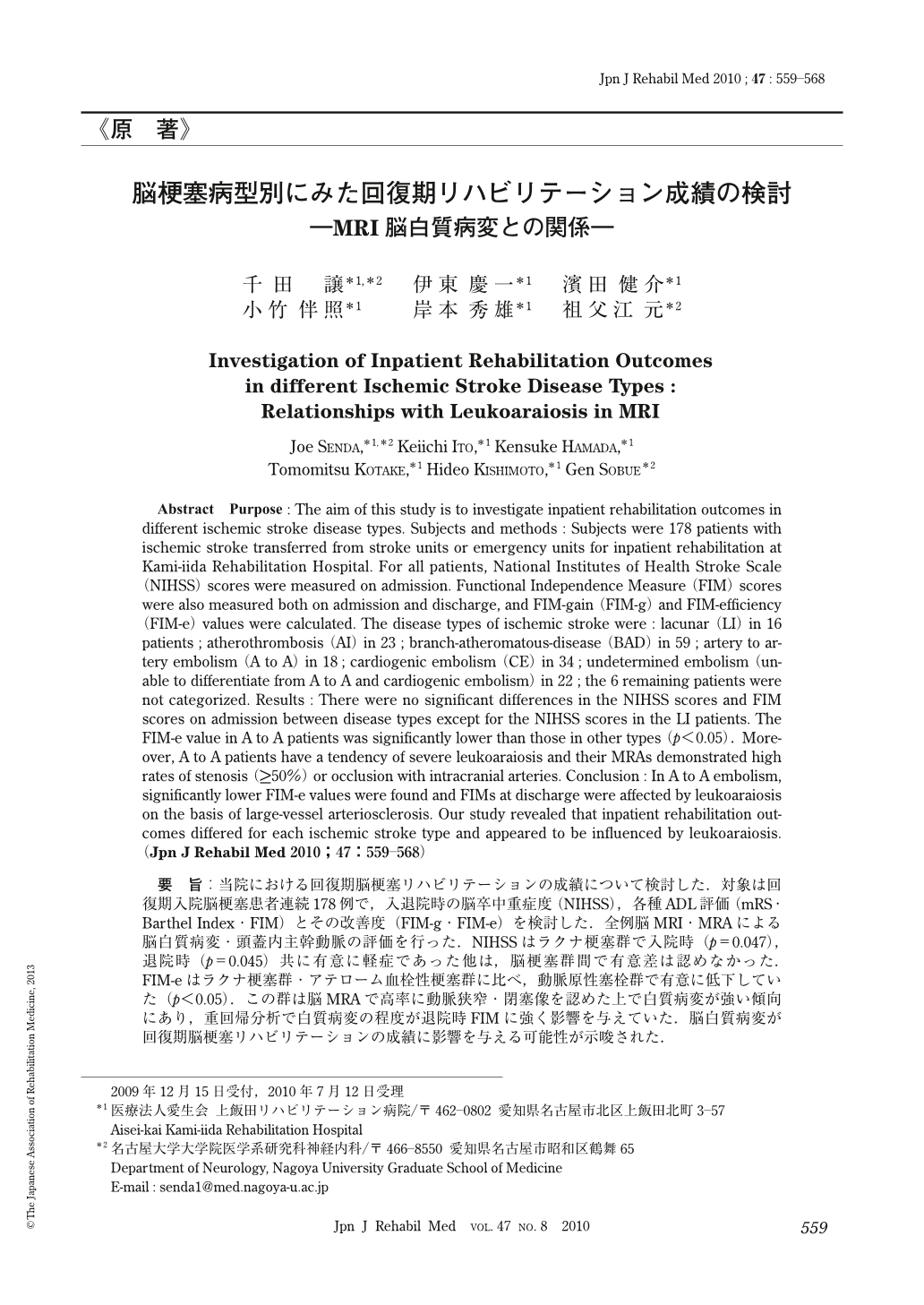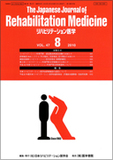Japanese
English
- 販売していません
- Abstract 文献概要
- 1ページ目 Look Inside
- 参考文献 Reference
要旨:当院における回復期脳梗塞リハビリテーションの成績について検討した.対象は回復期入院脳梗塞患者連続178例で,入退院時の脳卒中重症度(NIHSS),各種ADL評価(mRS・Barthel Index・FIM)とその改善度(FIM-g・FIM-e)を検討した.全例脳MRI・MRAによる脳白質病変・頭蓋内主幹動脈の評価を行った.NIHSSはラクナ梗塞群で入院時(p=0.047),退院時(p=0.045)共に有意に軽症であった他は,脳梗塞群間で有意差は認めなかった.FIM-eはラクナ梗塞群・アテローム血栓性梗塞群に比べ,動脈原性塞栓群で有意に低下していた(p<0.05).この群は脳MRAで高率に動脈狭窄・閉塞像を認めた上で白質病変が強い傾向にあり,重回帰分析で白質病変の程度が退院時FIMに強く影響を与えていた.脳白質病変が回復期脳梗塞リハビリテーションの成績に影響を与える可能性が示唆された.
Abstract Purpose : The aim of this study is to investigate inpatient rehabilitation outcomes in different ischemic stroke disease types. Subjects and methods : Subjects were 178 patients with ischemic stroke transferred from stroke units or emergency units for inpatient rehabilitation at Kami-iida Rehabilitation Hospital. For all patients, National Institutes of Health Stroke Scale (NIHSS) scores were measured on admission. Functional Independence Measure (FIM) scores were also measured both on admission and discharge, and FIM-gain (FIM-g) and FIM-efficiency (FIM-e) values were calculated. The disease types of ischemic stroke were : lacunar (LI) in 16 patients ; atherothrombosis (AI) in 23 ; branch-atheromatous-disease (BAD) in 59 ; artery to artery embolism (A to A) in 18; cardiogenic embolism (CE) in 34; undetermined embolism (unable to differentiate from A to A and cardiogenic embolism) in 22 ; the 6 remaining patients were not categorized. Results : There were no significant differences in the NIHSS scores and FIM scores on admission between disease types except for the NIHSS scores in the LI patients. The FIM-e value in A to A patients was significantly lower than those in other types (p<0.05). Moreover, A to A patients have a tendency of severe leukoaraiosis and their MRAs demonstrated high rates of stenosis (≧50%) or occlusion with intracranial arteries. Conclusion : In A to A embolism, significantly lower FIM-e values were found and FIMs at discharge were affected by leukoaraiosis on the basis of large-vessel arteriosclerosis. Our study revealed that inpatient rehabilitation outcomes differed for each ischemic stroke type and appeared to be influenced by leukoaraiosis.

Copyright © 2010, The Japanese Association of Rehabilitation Medicine. All rights reserved.


